| Pages:
1
2
3
..
9 |
Dan Vizine
National Hazard
   
Posts: 628
Registered: 4-4-2014
Location: Tonawanda, New York
Member Is Offline
Mood: High Resistance
|
|
The trials & tribulations of Thorium production
As I understand it, in 2015 the US government will move to more tightly control the buying and selling of radioactive materials by requiring that
buyers and sellers have a license. I haven't researched it myself, this is what I was told by the supplier that I buy most of my chemicals from on
eBay, a reliable former chemist.
So I guess the time to move on my dream of producing thorium metal is now. The only thorium material I can access in a reasonable amounts currently is
thorium nitrate tetrahydrate (and I have), the universal thorium salt. According to the literature this material can be calcined directly to thorium
dioxide. And I'm sure it can, but I have purity concerns.
Alternatively, based on work done by the government, it appears that a better route will be treating aqueous thorium nitrate with ammonia to a pH of
seven or eight. This will give me thorium hydroxide which can be calcined with a greater expectation of achieving high purity thorium dioxide.
Since I'm talking about thorium dioxide, those of you who have explored these same dark synthetic passageways probably already realize that I have
opted for the straight calcium reduction route for 1 h @ 950 degrees Celsius.
The other methods that I have discarded include electrolysis of molten thorium halides (primarily because of the difficulty of obtaining the
tetrafluoride), the magnesium reduction of the tetrachloride (because I am not confident that I can completely separate the residual magnesium from
the thorium-magnesium solid solution) and calcium reduction of the tetrafluoride (for both reasons).
The reaction vessel is a 304 stainless steel pressure container from Whitey. It's rated to 1800 PSI but I don't really expect significant pressure to
accompany this reaction. Of course it will scale significantly after an hour at 950 C, but it only needs to last for one or two trials. From past
experience though, after cleaning the surface scale off this reactor, it will still be quite serviceable for my other needs. I won't be pumping it up
to 1800 PSI anytime soon (or ever).
I've tried to make a detailed accounting of the daughter products that I need to worry about, primarily radium and radon. All of the reactions will be
done outside, because, well that's obvious...
The jar which has been sealed forever probably contains some radon. Simply opening that outside will certainly be enough to allow it to dissipate
safely. A larger amount of radon is undoubtedly trapped in the crystal lattice and it will be freed upon the first dissolution. Given the
exceptionally long half-life of thorium, yes, there will be radium, but is it enough to worry about? Well let's put it this way... Thorium nitrate and
thorium hydroxide or dioxide mixtures were used, as everyone already knows, as mantels in camping lanterns. Am I willing to risk exposure to something
that was a commercial product forever? Yes. To put this in perspective, when I think of some of the horrible cancer hazards I've worked with in my
lifetime, including bis(chloromethyl) ether, this is just another one. However, it does have unique features. I am used to being able to destroy my
cancer hazards by reacting them, not so with thorium. I also appreciate the formation of "hot spots" caused by the inhalation of radioactive
particles, how this greatly concentrates the effective radiation received by a tiny bit of tissue. The obvious answer here is to work outside, wear a
respirator and observe good chemical hygiene.
The product from the reaction is expected to be a coarse metallic powder which can be compacted to form "solid" bodies of sorts. This is usually the
first step taken along the route toward sintering. Instead, I'm going to produce the compacts at a pressure of about 40 tons/sq inch (this works quite
well with platinum powder and thorium is softer, similar to copper, and annealed copper, at that) for remelting.
I found a person with an inert gas arc-melting furnace who will melt this material for a fee of a few hundred dollars an hour. My concern here is what
to use as the hearth plate. Ideally it should be thorium dioxide ceramic. I still need to think about this.
Anyway, why have I started this topic if I haven't done the experiment yet? Well, I hope to take advantage of the collective smarts of this group to
point out what I've missed. This synthesis seems to be worth all possible preparations prior to beginning.
[Edited on 4-4-2014 by Dan Vizine]
|
|
|
elementcollector1
International Hazard
    
Posts: 2684
Registered: 28-12-2011
Location: The Known Universe
Member Is Offline
Mood: Molten
|
|
While I have not worked with thorium, why not show all of us a good time and start from thoriated tungsten welding rods? 
1800 PSI is probably good, although I'd be careful all the same - these types of reactions can be explosive at times.
Be sure to watch for potential double salts - I have no idea if 'thoriates' exist, but it's entirely possible, which would make reaction with ammonia
a no-go.
Just a thought, after the recent propylene carbonate RT electrolysis research - might thorium be possible through this route? I know not everything is
soluble in propylene carbonate, but it would certainly save on setup costs...
Elements Collected:52/87
Latest Acquired: Cl
Next in Line: Nd
|
|
|
blogfast25
International Hazard
    
Posts: 10562
Registered: 3-2-2008
Location: Neverland
Member Is Offline
Mood: No Mood
|
|
Hi Dan,
I have some sources indicating the calciothermic reduction of UO<sub>2</sub> was abandoned because of poor quality of the metal
obtained, largely because of U's great affinity for oxygen, resulting in brittle metal with high oxygen content. Similar reports exist for similar
oxides like zirconia and titania (indeed these metals are produced in anaerobic conditions, if pure, malleable metal is what you want).
I believe the situation will be similar for ThO<sub>2</sub> + 2 Ca.
I understand the difficulty of preparing anhydrous ThF<sub>4</sub> but would personally gun for magnesiothermic reduction of that
fluoride.
I've been working for some time on ZrF<sub>4</sub> + 2 Mg and am preparing the fluoride by pyrolysis under argon of
(NH<sub>4</sub> <sub>2</sub>ZrF<sub>6</sub>. I
wonder if a similar Th salt could exist? <sub>2</sub>ZrF<sub>6</sub>. I
wonder if a similar Th salt could exist?
UF<sub>4</sub> + 2 Mg is tried, tested and used but of course Th's MP is much higher than that of U...
[Edited on 4-4-2014 by blogfast25]
|
|
|
blogfast25
International Hazard
    
Posts: 10562
Registered: 3-2-2008
Location: Neverland
Member Is Offline
Mood: No Mood
|
|
EC1:
He has access to thorium nitrate: no need to mess with thoriated electrodes.
|
|
|
Dan Vizine
National Hazard
   
Posts: 628
Registered: 4-4-2014
Location: Tonawanda, New York
Member Is Offline
Mood: High Resistance
|
|
This isn't a Goldschmidt or "Thermite" reaction, in fact I think it's endothermic which is why we have to cook it at 950 C.
The ammonia reaction was worked out by ORNL. It will work and it's easy. Still kicking myself hard for letting 100 g ThO2 for $75 slip away on eBay.
I neglected to mention that the reaction is going to be performed at about 500 mm in argon. Part of the reason I bought the commercial cylinder is
because I want it sealed, I mean really sealed. I have a T sized cylinder of UHP argon in the basement that I use for preparing ampoules of group 1
metals (although shiny silver barium is going to be mine, dammit!).
The magnesiothermic reaction is nice because it makes a solid metal blob but you have to distill excess magnesium out to get sponge. I am wary of my
ability to do so efficiently or even know if I have.
[Edited on 4-4-2014 by Dan Vizine]
[Edited on 4-4-2014 by Dan Vizine]
|
|
|
blogfast25
International Hazard
    
Posts: 10562
Registered: 3-2-2008
Location: Neverland
Member Is Offline
Mood: No Mood
|
|
Quote: Originally posted by Dan Vizine  | This isn't a Goldschmidt or "Thermite" reaction, in fact I think it's endothermic which is why we have to cook it at 950 C.
I neglected to mention that the reaction is going to be performed at about 500 mm in argon. Part of the reason I bought the commercial cylinder is
because I want it sealed, I mean really sealed. I have a T sized cylinder of UHP argon in the basement that I use for preparing ampoules of group 1
metals (although shiny silver barium is going to be mine, dammit!).
Thanks, guys! |
No, I'm pretty sure it's exothermic but I'll get back to you on that.
Certainly the magnesiothermic reductions of both ZrF4 and UF4 are strongly exothermic.
Argon may help but it's the presence of oxide itself that leads to oxygen in the metal (at least in the case of UO2).
|
|
|
blogfast25
International Hazard
    
Posts: 10562
Registered: 3-2-2008
Location: Neverland
Member Is Offline
Mood: No Mood
|
|
Standard HoF of ThO2 = - 1226.4 kJ/mol
Standard HoF of CaO = - 635 kJ/mol
So, standard heat of reduction = - 44 kJ/mol, barely exothermic.
This also means that your equilibrium constant (at least at RT) is fairly close to one. That would explain why poor quality metal would result.
Quote: Originally posted by Dan Vizine  | The ammonia reaction was worked out by ORNL. It will work and it's easy. Still kicking myself hard for letting 100 g ThO2 for $75 slip away on eBay.
|
Did you mean the precipitation of hydrated thoria with ammonia? Or the whole thing, including the recuction? The precipitation bit is the 'walk in the
park bit'.
[Edited on 4-4-2014 by blogfast25]
|
|
|
elementcollector1
International Hazard
    
Posts: 2684
Registered: 28-12-2011
Location: The Known Universe
Member Is Offline
Mood: Molten
|
|
I know he has a source - I was just proposing some inane ramblings as usual.
Once he gets Th(OH)4, wouldn't HF or NaF be relatively easy to obtain? After that, thionyl chloride or maybe heating with a few equivalents ammonium
chloride might be possible for obtaining anhydrous ThF4.
Elements Collected:52/87
Latest Acquired: Cl
Next in Line: Nd
|
|
|
Dan Vizine
National Hazard
   
Posts: 628
Registered: 4-4-2014
Location: Tonawanda, New York
Member Is Offline
Mood: High Resistance
|
|
Hi Blogfast,
You're the thermodynamicist between the two of us, and you may be right. However no exotherm of any importance occurs during the reaction.
The flourides are expected to be exothermic in reduction, that much is clear. In fact, that's the problem!
The temperatures generated are too extreme for my reactor, which will handle the Ca/ThO2 OK. I don't want to get a lot of iron, nickel and chromium in
there as well. I'd need to go to a Mo liner which is not possible due to reactor geometry.
|
|
|
blogfast25
International Hazard
    
Posts: 10562
Registered: 3-2-2008
Location: Neverland
Member Is Offline
Mood: No Mood
|
|
You've got your chlorides cap on. We're talking fluorides here.
|
|
|
blogfast25
International Hazard
    
Posts: 10562
Registered: 3-2-2008
Location: Neverland
Member Is Offline
Mood: No Mood
|
|
Hi Dan (or should I say 'Zan'  ): ):
If I have time I'll try and work out a value for K at 950 C. Personally I'm sceptical: at low values of K, your metal will be riddled with residual
ThO2. And there will be unreacted Ca too...
Agreed that there will be no noticeable exotherm but that creates the other problem...
[Edited on 4-4-2014 by blogfast25]
|
|
|
Dan Vizine
National Hazard
   
Posts: 628
Registered: 4-4-2014
Location: Tonawanda, New York
Member Is Offline
Mood: High Resistance
|
|
The chemistry to obtain the halides is well documented. I am trying to avoid soluble species because that means evaporation and evaporation means
carry-over and carry-over means spreading the contaminated areas.
The hydroxide allows virtually quantitative Th recovery and a "clean" filtrate.
I'm still debating the best calcination method to minimize dusting.
Damn, that was fast...outed already. Oddly enough, universities have contacted me because of forum posts here. I might as well just attach my real
name. If I'm doing something wrong, the use of a user name won't hide me. And besides, I don't think I am doing anything I need to hide. As a
life-long chemist, I apply all precautions possible.
[Edited on 4-4-2014 by Dan Vizine]
|
|
|
blogfast25
International Hazard
    
Posts: 10562
Registered: 3-2-2008
Location: Neverland
Member Is Offline
Mood: No Mood
|
|
Quote: Originally posted by Dan Vizine  | I am trying to avoid soluble species because that means evaporation and evaporation means carry-over and carry-over means spreading the contaminated
areas.
|
Which I why I'm kind of glad I 'missed' an opportunity to buy some decent Uraninite some years ago. I'd be too tempted to prepare the metal and have
the hazmat smurfs drag me off to gaol... 
[Edited on 4-4-2014 by blogfast25]
[Edited on 4-4-2014 by blogfast25]
|
|
|
Dan Vizine
National Hazard
   
Posts: 628
Registered: 4-4-2014
Location: Tonawanda, New York
Member Is Offline
Mood: High Resistance
|
|
Blogfast,
ORNL investigated the ammonia reaction in great detail as they wanted tailored thoria particles. The Ca reduction was/is a practiced production
method.
From "The Handbook of Preparative Inorganic Chemistry" by Brauer.
II. REDUCTION OF THE OXIDE WITH CALCIUM
Th02 + 2Ca = Th + 2Ca0
264.1 80.2 232.1 112.2
A) PREPARATIVE PROCESS
The process is based on the reduction of very pure ThO2 with distilled Ca in the presence of anhydrous CaCl2 heated to 450°C.
The CaCl2 melts at the temperature of the reaction, affording a liquid reaction medium. The heavy Th product settles to the
bottom and is thus protected by a layer of melt. The apparatus is either a steel bomb capped with a threaded conical lid (cf. the paper of
Marden and Rentschler) or the simpler welded steel tube described under method I for the preparation of Ti. The charge, which is made up of four parts
of Th02 , four parts of CaCl2 and three parts of ground Ca, is vigorously shaken in a closed bottle to achieve the most complete mixing possible. The
bomb is filled rapidly, sealed and heated for one hour at 950°C. The tube is then cooled and opened; the resultant pea-sized reaction product is
gradually added to water (about two liters per 40 g. of starting Th02 ) with vigorous stirring to prevent a local temperature rise. After the
calcium has completely reacted with the water and the evolution of gas ceases, stirring is stopped, the supernatant liquid is decanted, and the solid
is washed four times with two-liter portions of water, vigorously shaking each time for 5-10 minutes. The decanted supernatants are
low-concentration suspensions of dark, fine Th. Finally, 200 ml. of water is added to the remaining heavy residue, followed by 25 ml. of
conc. nitric acid (vigorous stirring). The odor of acetylene is noticeable, and if the ThO2 used in the preparation was made from thorium nitrate
which contained some sulfate, the odor of H 2S will also be present. After 10 minutes, the solution is diluted tenfold, the product is allowed to
settle, the supernatant is decanted, and the acid treatment is repeated once or twice. After thorough washing with water (twice, two liters each
time), the product is suction-filtered, treated with alcohol and ether, and dried in vacuum at 300°C. Under favorable conditions, the relatively
coarse, dark gray powder is obtained in 90% yield.
The addition of CaCl2 is can be seen to be advantageous.
According to another source: "The powder [from the Ca reduction] may be compacted and sintered to give massive metal that is very ductile"
So, here's hoping this is better than patent information!
[Edited on 4-4-2014 by Dan Vizine]
|
|
|
blogfast25
International Hazard
    
Posts: 10562
Registered: 3-2-2008
Location: Neverland
Member Is Offline
Mood: No Mood
|
|
Dan,
I've found my own references to the process, so that's settled.
Can you elaborate a bit on scale and how you plan to hold the reactor at 950 C?
|
|
|
Dan Vizine
National Hazard
   
Posts: 628
Registered: 4-4-2014
Location: Tonawanda, New York
Member Is Offline
Mood: High Resistance
|
|
A former obsession supports the current. At one point I used to enjoy building machines from parts. I needed to cast metal parts, so I built an 1100 C
metal melting furnace out of some FeCrAl wire from two discarded space heaters and ceramic fiber board, etc. A cheap PID controller from eBay, a high
current SSR and a heatsink teamed with a K thermocouple completed the set-up.
I may make a hole through the furnace top to allqw the reactor to be connected to an external rod agitated by hand or an old air powered windshield
wiper motor from a truck. Like on a Kugelrohr.
The reactor is SS304, about 10% Ni. People often think that stainless steels, especially austenitic ones, are good choices for high-temperature work
and metal melting. Like the austenitic SS RA330, which resists scaling to 2100 C. RA330 has high Ni, like 35 to almost 40%, I think.. But the higher
the Ni, the worse the resistance to liquid metals. Molten calcium cracks RA330, but I believe I'm fine with SS304. So, I'll accept the exterior
scaling that occurs.
The belt sander, btw, will be used to powder Ca if it does so without grit contamination. That may be optimistic, so I may need to use a file.
Microscopic examination should tell.
All final chemicals were purchased last night, HNO3, Aq. NH3 and CaCl2 dihydrate USP grade.
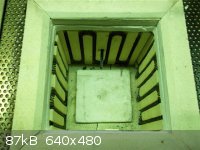 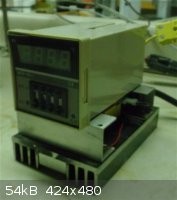 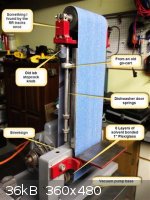
[Edited on 6-4-2014 by Dan Vizine]
|
|
|
Dan Vizine
National Hazard
   
Posts: 628
Registered: 4-4-2014
Location: Tonawanda, New York
Member Is Offline
Mood: High Resistance
|
|
The other pics:
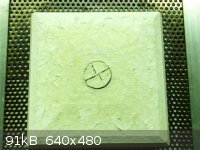
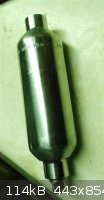
The reactor has a 75 cc capacity. I'll put a hole in the furnace roof.
[Edited on 6-4-2014 by Dan Vizine]
|
|
|
blogfast25
International Hazard
    
Posts: 10562
Registered: 3-2-2008
Location: Neverland
Member Is Offline
Mood: No Mood
|
|
Fantastic. Please do report on your progress here. I for one would love to write about it.
|
|
|
Dan Vizine
National Hazard
   
Posts: 628
Registered: 4-4-2014
Location: Tonawanda, New York
Member Is Offline
Mood: High Resistance
|
|
Blogfast, I'm planning to do exactly that. The reactions will wait until it's warmer here in New York as everything is to be done outside as much as
possible.
Thanks for your many thoughtful comments. I'm surprised that this is still mostly a dialog, though. I was really serious about wanting the input from
any or all others involved in similar projects.
Sensible precautions I've not mentioned, hazards I've not thought through, preferred ways of doing things? All comments are invited. This needs to
work perfectly the first time.
|
|
|
blogfast25
International Hazard
    
Posts: 10562
Registered: 3-2-2008
Location: Neverland
Member Is Offline
Mood: No Mood
|
|
Quote: Originally posted by Dan Vizine  |
Sensible precautions I've not mentioned, hazards I've not thought through, preferred ways of doing things? All comments are invited. This needs to
work perfectly the first time. |
Avoiding particulate matter is the obvious thing to do but you're already taking that seriously. I think there are far worse things to work with than
thoria and thorium.
Look forward to get the full report!
EC1:
For ThF<sub>4</sub> (anh.) one of the routes is pyrolysis of NH4ThF<sub>5</sub>, as I thought. Not incredibly hard either, 300
C. Rather heavy on the NH4HF2 though...
|
|
|
elementcollector1
International Hazard
    
Posts: 2684
Registered: 28-12-2011
Location: The Known Universe
Member Is Offline
Mood: Molten
|
|
Problem is, only a handful of members here have done anything like this, and even then the projects usually weren't so similar that they could be
easily compared.
blogfast25: Ah, so pretty much the fluoride equivalent. Seems about right, but don't these usually have to be run for 4 hours under vacuum or some
other long time?
Elements Collected:52/87
Latest Acquired: Cl
Next in Line: Nd
|
|
|
blogfast25
International Hazard
    
Posts: 10562
Registered: 3-2-2008
Location: Neverland
Member Is Offline
Mood: No Mood
|
|
Quote: Originally posted by elementcollector1  | | blogfast25: Ah, so pretty much the fluoride equivalent. Seems about right, but don't these usually have to be run for 4 hours under vacuum or some
other long time? |
As with all reactions, rate depends strongly on temperature but with a reported decomposition temperature of 300 C,
NH4ThF5 === > NH4F + ThF4
... should proceed quite swiftly, at say 500 C.
Vacuum is one option, to protect the fluoride from:
ThF4 + O2 === > ThO2 + F2, which is thermodynamically favourable.
As coincidence would have it my latest batch of (NH4)2ZrF6 is just drying, as I'm writing this. I will be pyrolysing that in a stream of argon
(instead of vacuum), hopefully next weekend.
In all cases the starting material must be bone dry.
[Edited on 6-4-2014 by blogfast25]
|
|
|
Dan Vizine
National Hazard
   
Posts: 628
Registered: 4-4-2014
Location: Tonawanda, New York
Member Is Offline
Mood: High Resistance
|
|
How is ThF4 separated from the NH4F? Can NH4F be removed by sublimation?
What's the ZrF4 for?
|
|
|
elementcollector1
International Hazard
    
Posts: 2684
Registered: 28-12-2011
Location: The Known Universe
Member Is Offline
Mood: Molten
|
|
If this is anything like the chloride, the NH4F decomposes into NH3 and HF, which are both hygroscopic. Given enough starting
NH4F, this should remove all the water from your chloride, rendering it anhydrous.
Elements Collected:52/87
Latest Acquired: Cl
Next in Line: Nd
|
|
|
Dan Vizine
National Hazard
   
Posts: 628
Registered: 4-4-2014
Location: Tonawanda, New York
Member Is Offline
Mood: High Resistance
|
|
So, what do you do the reaction in, nickel? Or can other reactors be used if everything is dry and continually purged by inert gas during HF
evolution?
|
|
|
| Pages:
1
2
3
..
9 |